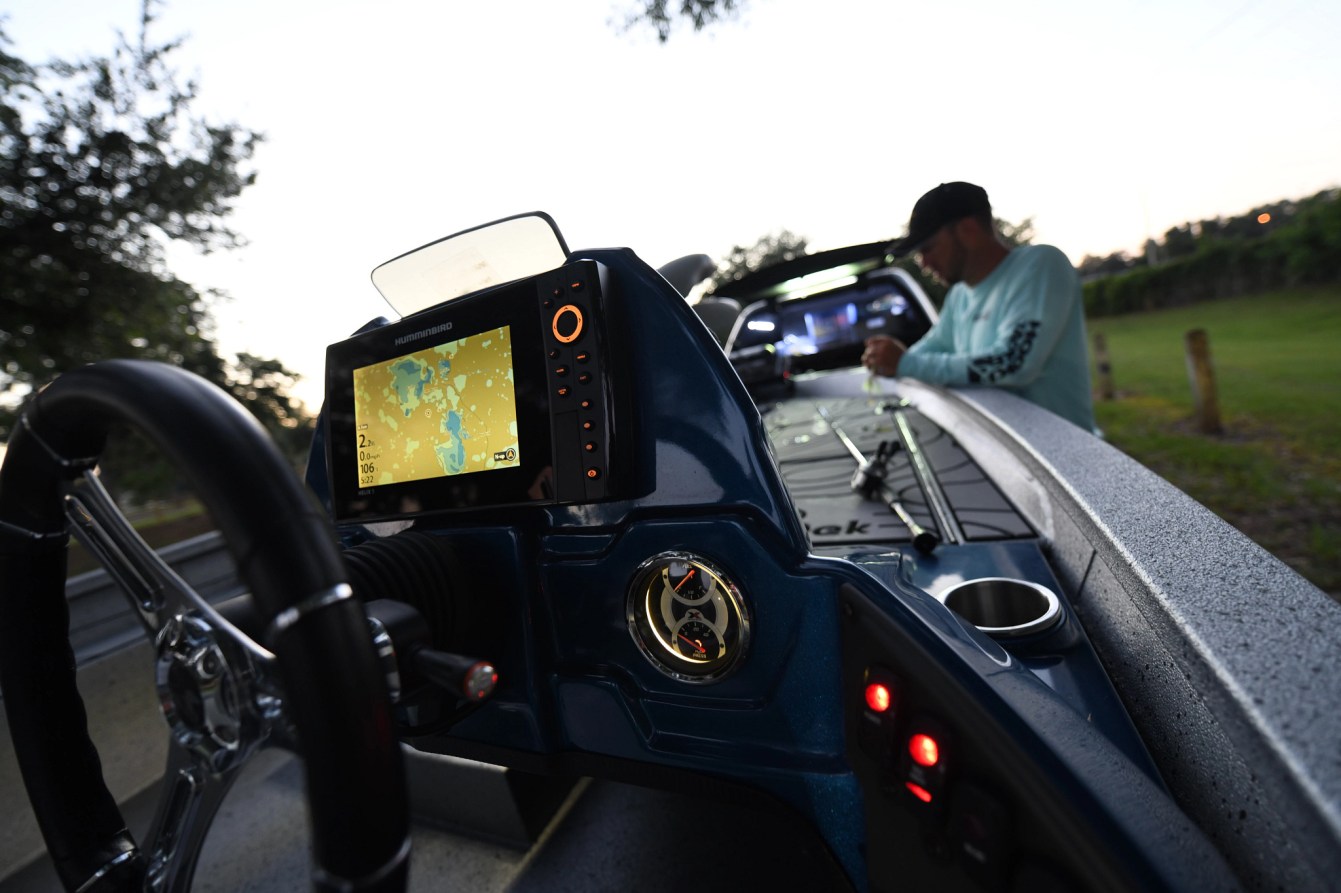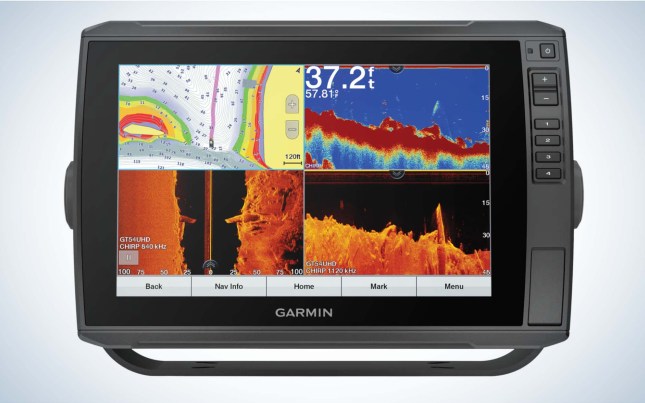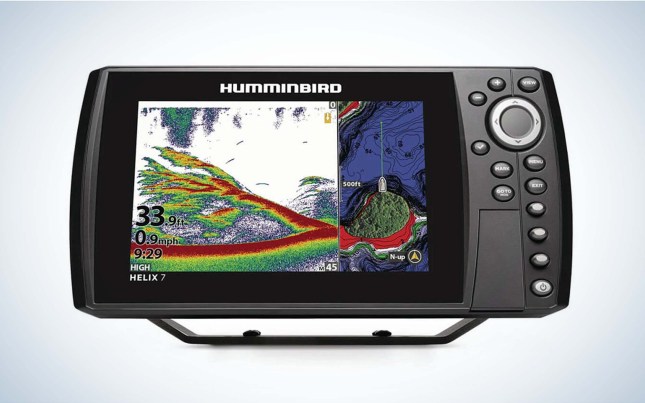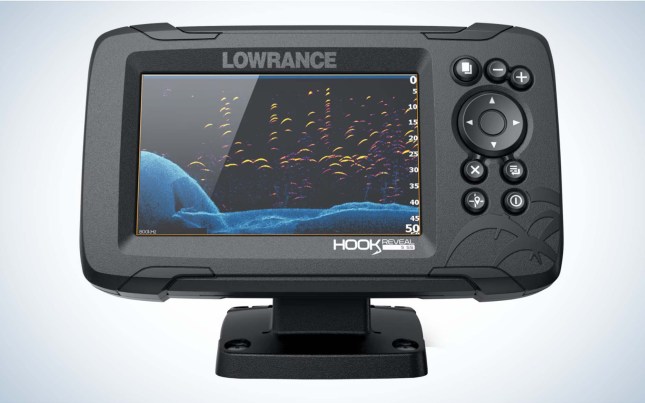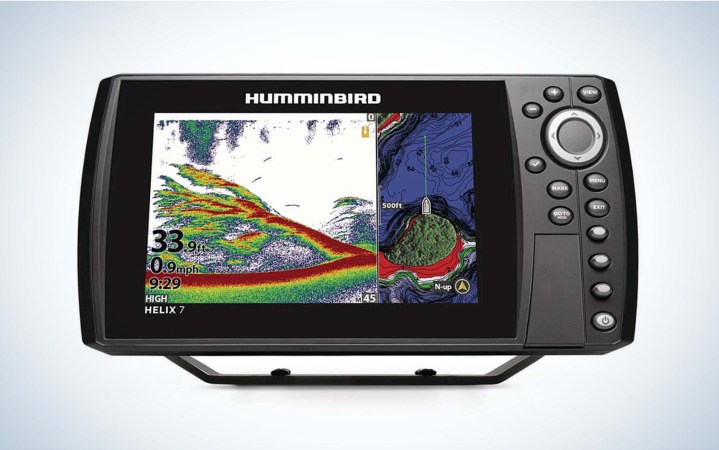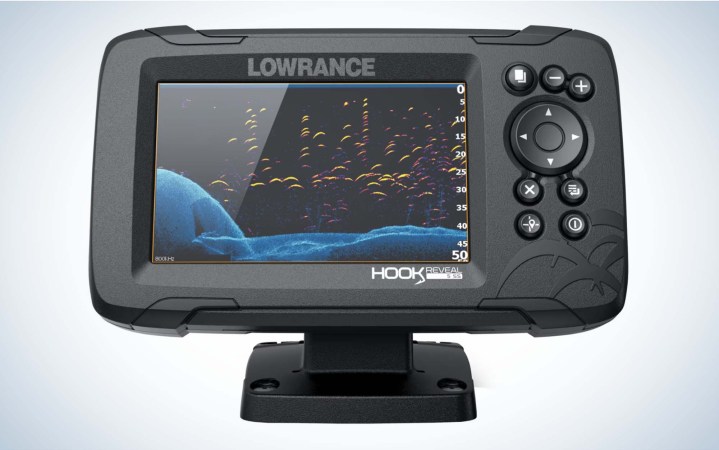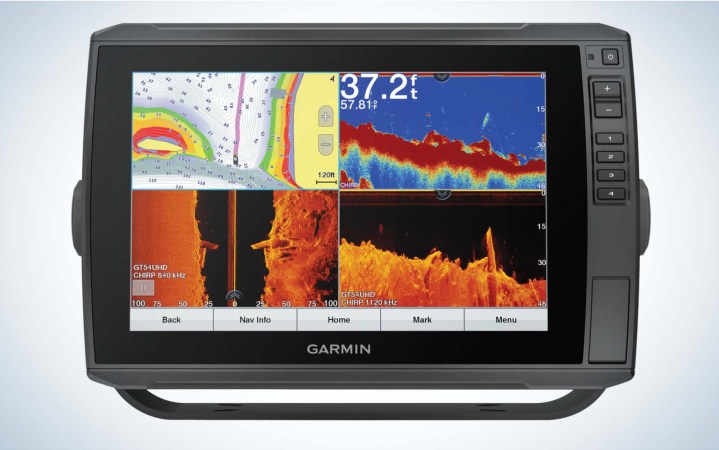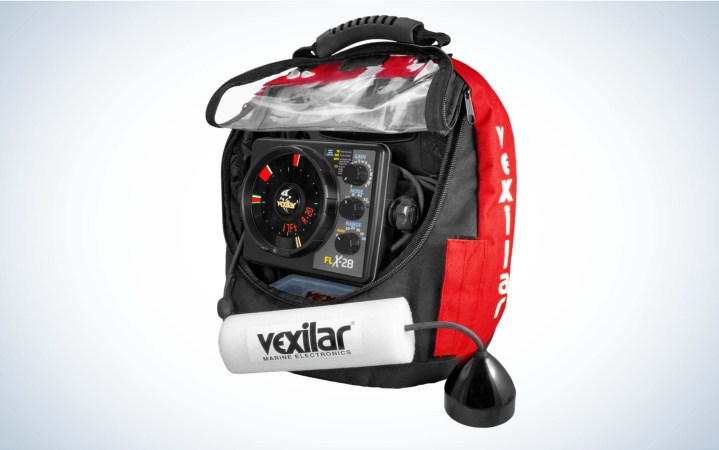We may earn revenue from the products available on this page and participate in affiliate programs. Learn More ›
You have a lot of great options for fish finders under $1,000, but those options also have the potential for great confusion. The computing processing power available continues to grow substantially, and you’re able to get more bang for your buck than ever before. The problem is that the more features you want, the more compromises you’ll have to make.
Fortunately, the major sonar and mapping players are in an arms race, not only competing for the dollars of those who are prepared to spend five figures to outfit a boat but also for the rest of us—those who know what we want, understand what we need, and keep a tighter hold on the purse strings.
The result is that a thousand bucks buys an incredible amount of technology, but you’ll need to spend it wisely. Here are my picks for the best fish finders under $1,000:
- Best for Side Imaging: Humminbird Helix 7 CHIRP MSI GPS G4N
- Best Under $500: Lowrance Hook Reveal 5
- Best Large Screen: Garmin ECHOMAP Ultra 106sv Fish Finder/Chartplotter Combo
- Best for Ice Fishing: Vexilar Pro Pack FLX28 LI W/Pro View
Best Fish Finders Under $1,000: Reviews and Recommendations
Best for Side Imaging: Humminbird Helix 7 CHIRP MSI GPS G4N
Key Features
- High-definition 7-inch screen
- CHIRP
- MEGA Down Imaging
- Internal GPS
- Built-in mapping
- NMEA built-in networking system
- Price: $950
Pros
- Exceptional mapping
- Super-clear side-imaging
- Screen can be split if needed
Cons
- Hard to read, divided into more than two screens

Humminbird enables anglers on a generous-but-reasonable budget to get into the side-imaging game. Their industry-leading SI technology shows up just as well as it does on the larger units. The screen can be split into multiple views and functions, although any more than two, and it’s hard for all but the youngest eyes to make out, especially when moving. The keypad and menus are easy to navigate, which means that if you’ve never used an advanced sonar unit before, you’ll be able to get the most out of this one in a hurry. If you don’t need side-imaging, you can get a larger Humminbird with just down-imaging for about the same price, but when you’re ready to step up your game, this is the route to go.
Read our full review of the Helix 7 to learn more.
Best Under $500: Lowrance Hook Reveal 5
Key Features
- High-definition 7-inch screen
- CHIRP
- Preloaded maps
- DownScan
- Price: $390
Pros
- Bargain priced
- Quality mapping and real-time mapping
- Multiple color palettes
- Good option for kayaks
Cons
- The smaller screen may be hard for some to read, especially when split
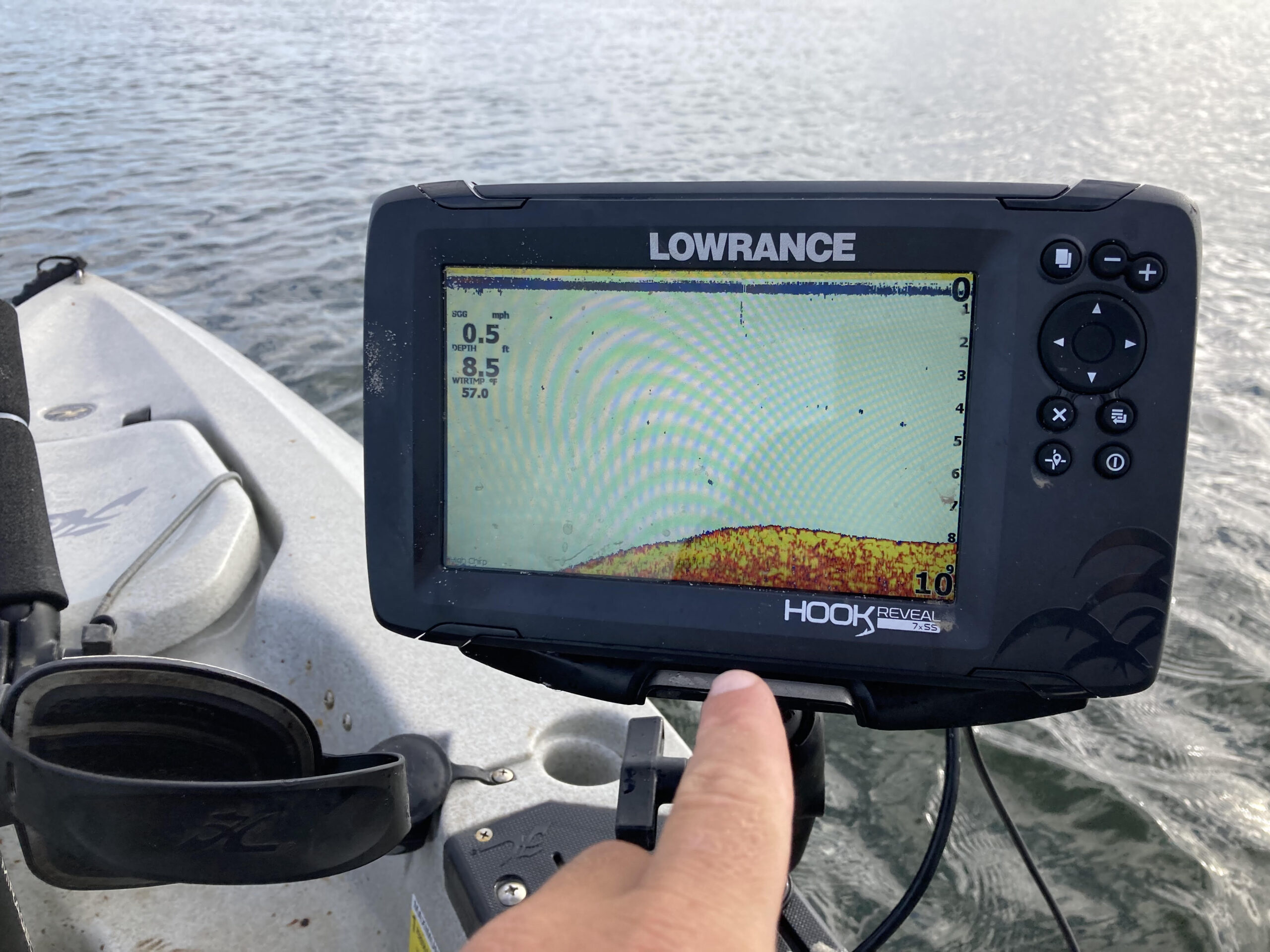
My first sonar unit in 1996 cost more than this one, and it was a 4-inch black-and-white screen with no mapping and only the most rudimentary sort of pixelated two-dimensional sonar. In fact, this is better and more advanced and more accurate than what the top pros used back then. It has autotuning sonar to make sure you get the best picture for the conditions, as well as really easy menu navigation to ensure that you spend more time fishing and less time fiddling with buttons. I’m amazed that they’ve also managed to include real-time mapping, which allows you to create maps of your favorite lake or improve upon what’s out there. It doesn’t have side-imaging or forward-facing capabilities, but if you don’t covet those and want to stay on a tight budget, this is a winning choice.
Read our full review of the Lowrance Hook Reveal to learn more.
Best Large Screen: Garmin ECHOMAP Ultra 106sv Fish Finder/Chartplotter Combo
Key Features
- 10-inch touchscreen display
- CHIRP sonar plus ClearVu and SideVu
- Supports Panoptix LIveScope if desired
- Pre-loaded charts
- Price: On sale for $1000
Pros
- Large screen
- Side-imaging capabilities
- Built-In Quickdraw Contours
Cons
- This may result in the temptation to upgrade to LiveScope
Garmin’s ECHOMAP units are the choice of the pros, who often employ multiple 12 inch or larger screens to accommodate their many needs. If you’ve never used a 10-inch screen before, the amount of information may blow your mind, and the precision of the picture that you find with this best fish finder under $1,000.
The menus might not be quite as easy to use as some other units, but they certainly don’t require a degree in computer science. The combination of mapping, CHIRP sonar, and side-imaging, along with the potential to add LiveScope, will give any angler more technology than was available at any price just a generation ago. It can be read in the sun, and there’s the ability to make your own maps, so there’s no body of water that’s off-limits or out of reach.
Read our full Garmin Echomap Ultra review to learn more.
Best for Ice Fishing: Vexilar Pro Pack FLX28 LI W/Pro View
Key Features
- Flasher style screen
- Five color palettes
- Day and night display brightness settings
- Max range of 300 feet
- Price: $730
Pros
- Ultra-durable, with carry case
- It comes with a battery and charger
- Various modes for super shallow water and other specific conditions
Cons
- Not ideal for anything but ice fishing
Vexilar remains the king of the flasher empire, which also means that they rule the roost for ice fishing, and for a good reason – these bulletproof units will give you a real-time picture of any situation below the ice that you’re likely to encounter. No matter the bottom type, no matter the depth, no matter the temperature, it will keep on operating when you get to where you need to be. It even comes with a rod holder, tackle box, and soft pack carry case to cover all of your needs, and it’s simple to use right out of the box. It may have less computing power than some of the models listed above, but it does what it does extremely well.
Read Next: Best Ice Fishing Fish Finders
Things to Consider Before Buying the Best Fish Finders Under $1,000
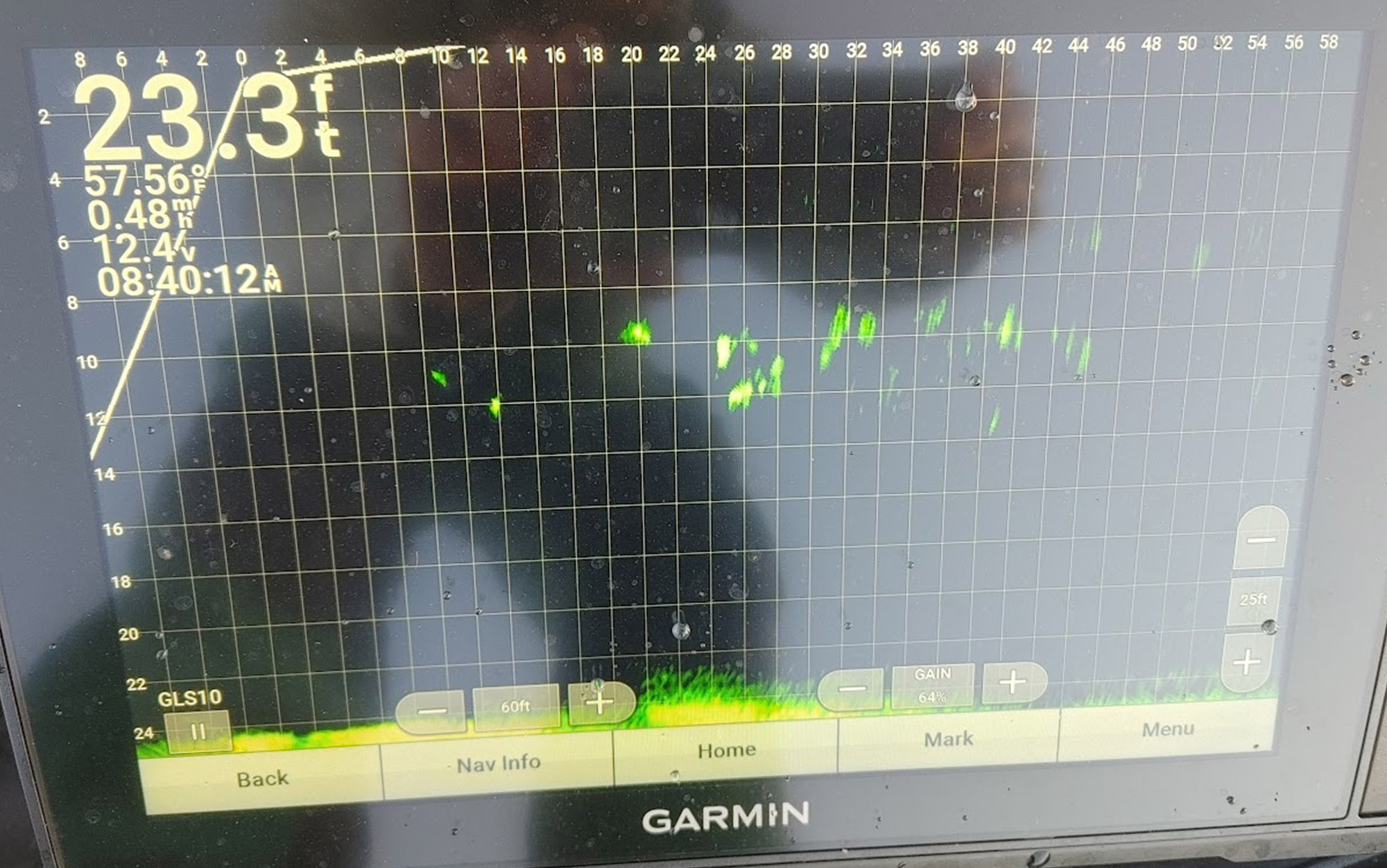
As noted above, I lived with a 4-inch screen on my earliest sonar units and caught plenty of fish with their help, but as my eyes age and my wallet deepens, I’ve learned to appreciate the finer things. That generally means a bigger screen and clearer picture more than anything else. When choosing a sonar unit, take a deep dive and figure out exactly what you need. If you don’t want side-imaging, for example, that knocks down the price considerably. Then get the largest unit you can get in your price range with all of those features. The particular brand may be a matter of personal preference. I always like to have the same brand front and back for interchangeability and for a shortened learning curve. Others, meanwhile, like differing brands, either because they offer different features or because they perceive slight differences as providing an advantage. Remember also when setting your budget that some necessary hardware or software, like mounts and map cards, may be important to you but not included in the final price.
Final Thoughts on the Best Fish Finders Under $1,000
When I bought my first bass boat in 1996, I couldn’t imagine that I’d have mapping on it, let alone side-imaging or forward-facing sonar. Now with the best fish finders under $1,000, I have all of those things. But truth be told, I use some far more than others—and some features little or not at all. I’ve used them all to catch more fish and navigate safely, but mapping is most important to me. Everything else stems from that, so if forced to adhere to a strict budget, I know where my priorities would lie. Your mileage may vary. Be sure to be honest with yourself, and spend as much as you can, but no more than you need to spend.
